 |
 |

 |
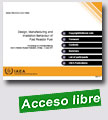 |
Design, Manufacturing and Irradiation Behaviour of Fast Reactor Fuel
IAEA TECDOC (CD-ROM), 2013, 287 p.
This publication presents the proceedings of a technical meeting which was organized in order to share knowledge and practical experience on the improvement and innovation of fuels for fast reactors. The objective of the meeting was to provide an overview of the status of the design, manufacture and irradiation |
behaviour of fast reactor fuel. Scientists and engineers from different fields discussed critical issues, with the aim to support efforts relating to the design and manufacture of nuclear fuels for the existing and next generation of fast reactors, as well as the optimization of future irradiation experiments.
Extraído de:
http://www-pub.iaea.org/MTCD/Publications/PDF/TECDOC-CD-1689/Start.pdf
|
 |
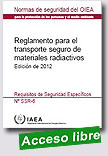 |
Reglamento para el transporte seguro de materiales radiactivos - Edición de 2012
Colección de normas de seguridad del OIEA, 2013, 180 p.
El objetivo del presente Reglamento es establecer requisitos que deben satisfacerse para garantizar la seguridad y proteger a las personas, los bienes y el medio ambiente de los efectos de las radiaciones en el transporte de materiales radiactivos. Esta protección se logra aplicando los siguientes requisitos: a) La contención del contenido radiactivo; b) El control de los niveles de radiación externa; c) La prevención de la criticidad; |
d) La prevención de los daños ocasionados por el calor.
Estos requisitos se satisfacen, en primer lugar, aplicando un enfoque graduado a los límites de contenido de los bultos y medios de transporte y a las normas funcionales relativas a los diseños de bultos en función del riesgo asociado con el contenido radiactivo. En segundo lugar, se satisfacen estableciendo condiciones relativas al diseño y utilización de los bultos y al mantenimiento de los embalajes, incluida la consideración de la índole del contenido radiactivo. Por último, se satisfacen aplicando controles administrativos, incluida, cuando proceda, la aprobación de las autoridades competentes.
En el transporte de materiales radiactivos, la seguridad de las personas y la protección de los bienes y el medio ambiente quedan garantizadas si se cumple el presente Reglamento. La certeza a este respecto se logra aplicando sistemas de gestión y programas de verificación del cumplimiento.
Extraído de: http://www-pub.iaea.org/MTCD/Publications/PDF/Pub1570s_web.pdf
|
 |
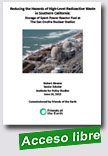 |
Reducing the Hazards of High‐Level Radioactive Waste in Southern California: Storage of Spent Power Reactor Fuel at The San Onofre Nuclear Station
Institute for Policy Studies, June 26 2013, 32 p.
Southern California Edison's decision to permanently shut down the San Onofre Nuclear Generating Station (SONGS) transforms it into a major radioactive waste storage site containing one of the largest concentrations of artificial radioactivity in the United States. These wastes are highly radioactive and will remain dangerous for tens‐of‐thousands of years. According to the U.S.
|
Government Accountability Office (GAO) in testimony before the U.S. Congress in April of this year, spent nuclear fuel is “considered one of the most hazardous substances on earth.”
Over the past 44 years, the San Onofre reactors generated about 948,956 spent fuel rods containing roughly 484 million curies of long‐lived radioactivity. Of the estimated 1,631 metric tons of spent fuel, about 73 percent is to be stored in two reactor pools. SONGS has generated nearly three times more long‐lived radioactivity than is stored in some 177 defense high‐level radioactive tanks at the U.S. Department of Energy’s Hanford site in Washington.
Extraído de: http://www.ips-dc.org/files/6229/ALVAREZ-SONGS-SNF-REPORT-06-26-2013.pdf |
 |
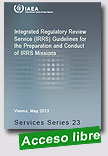 |
The IAEA’s Fundamental Safety Principles [1] relating to nuclear and radiation risks provide the basis for the IAEA safety standards and its safety regulation, the IAEA has established safety standards in the area of governmental, legal and regulatory framework for safety.
These safety standards provide guidance for every national regulatory body’s authority, independence and competence. In
|
support of the application of the IAEA safety fundamentals, safety standards and guidance and towards enhancing the effectiveness of the national regulatory infrastructure for safety, the ‘Integrated Regulatory Review Service’ (IRRS) has been developed. It provides a peer evaluation of the host state’s regulatory infrastructures in relation to the relevant IAEA safety standards. IRRS missions provide for discussion among experienced regulators regarding both technical and policy issues of a regulatory nature. Regulatory experiences are shared and regulatory approaches are harmonised among states. Both technical and policy discussions conducted during IRRS missions take into account issues identified during both the states’ self-assessment and the IRRS review of regulatory technical areas.
The IAEA offers several review services to Member States. Thus to avoid any potential overlap of the topics addressed by such services (which cover wide-ranging thematic areas) the IAEA has developed the IRRS to offer an integrated approach to the review of common aspects of any state’s national, legal and governmental framework and regulatory infrastructure for safety.
The IRRS combines the common regulatory infrastructure elements of the various safety review services offered by the IAEA, resulting in a cross-cutting review of the regulatory.
Extraído de: http://www-pub.iaea.org/MTCD/Publications/PDF/SVS-23_web.pdf
|
 |
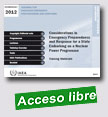 |
Considerations in Emergency Preparedness and Response for a State Embarking on a Nuclear Power Programme - Training Materials
IAEA, 2013, s. p.
The aim of these training materials is to provide a practical tool for emergency planning for a State embarking on a nuclear power programme, and to fulfil, in part, functions assigned to the IAEA under the Convention on Assistance in the Case of a |
Nuclear Accident or Radiological Emergency (the Assistance Convention). Under Article 5.a(ii) of the Assistance Convention, one function of the IAEA is to collect and disseminate to States Parties and Member States information concerning methodologies, techniques and available results of research relating to such emergencies.
One of the concerns associated with nuclear power is the possibility that a State embarking on a nuclear power programme might not have sufficient capabilities and therefore would not be adequately prepared to respond to a radiation emergency caused by severe accident conditions.
Protecting the public, the environment and property in the event of a failure of any level of defence in depth is the most important safety objective. A robust framework for emergency preparedness and response to a radiation emergency forms the last level of defence in depth and, as such, must be developed and implemented by any State embarking on a nuclear power programme, using best international practices. The establishment of capabilities and arrangements for emergency preparedness and response to severe accident conditions is one of the principal tasks in the development of a national infrastructure for nuclear power. State of the art emergency preparedness and response is a key element in achieving overall plant safety.
This training course complements the IAEA publication ‘Considerations in Emergency Preparedness and Response for a State Embarking on a Nuclear Power Programme’ (EPR-Embarking 2012). These materials are designed to help States apply the guidance in EPR-Embarking 2012, in order to develop the capability to adequately prepare for and respond to a radiation emergency after the commissioning and start of operation of its first nuclear power plant.
Extraído de:
http://www-pub.iaea.org/MTCD/Publications/PDF/EPR-Embarking%202012_CD/PDF/EPR-Embarking%202012_booklet.pdf
|
 |
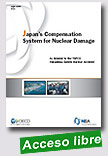 |
Japan's Compensation System for Nuclear Damage
Nuclear Energy Agency (NEA), 31/12/2012, 244 p.
Following the TEPCO Fukushima Daiichi nuclear power plant accident, extraordinary efforts were undertaken in Japan to implement a compensation scheme for the proper and efficient indemnification of the affected victims. This publication provides English translations of key Japanese legislative and administrative texts and other implementing guidance, as well as several commentaries by Japanese experts in the field of third party nuclear liability.
|
The OECD Nuclear Energy Agency (NEA) has prepared this publication in co-operation with the government of Japan to share Japan’s recent experience in implementing its nuclear liability and compensation regime. The material presented in the publication should provide valuable insights for those wishing to better understand the regime applied to compensate the victims of the accident and for those working on potential improvements in national regimes and the international framework for third party nuclear liability.
Extraído de:
http://www.oecdnea.org/tools/publication?query=
&div=&lang=&period=6m&sort=title&filter=1#p7089
|
 |
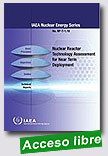
|
Nuclear Reactor Technology Assessment for Near Term Deployment
IAEA Nuclear Energy Series, 2013, 94 p.
Given the increasing interest in the near term deployment of new nuclear power plants, IAEA Member States have requested guidance on the process of evaluating and selecting available technology options. Reactor technology assessment enables the evaluation, selection, and deployment of the best technology to meet the objectives of a nuclear power programme. This publication demonstrates how reactor technology assessment |
is performed and how the process and results of this work enable decision making in nuclear power planning. The approach also provides decision makers with the documentation necessary to support their conclusions.
Extraído de:
http://www-pub.iaea.org/books/IAEABooks/8950/Nuclear-Reactor-Technology-Assessment-for-Near-Term-Deployment
|
 |
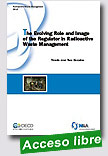 |
The Evolving Role and Image of the Regulator in Radioactive Waste Management - Trends over Two Decades
Nuclear Energy Agency (NEA), 31/12/2012, 28 p.
In the area of radioactive waste management, the regulator or safety authority has emerged in recent years as a principal actor in the eyes of civil society. This study shows how regulators are increasing their interaction with society while still retaining – or reinforcing – their independence and how they play their role within the stepwise licensing and decision-making processes now adopted in most countries. Safety is ensured by a |
“regulatory system”, in which a host of players, including local stakeholders, have a vital role to play. The technical regulator has come to be considered as the “people’s expert”, concentrating knowledge useful to local communities as they deliberate the hosting of a waste storage or disposal facility.
This report provides a useful update on the changing role of the regulator as well as insights that will be helpful to the many countries that are considering, or are preparing for, storage or disposal of radioactive waste either in near-surface facilities or deeper underground. While it focuses on the developments in waste management and disposal, the trends it describes are probably relevant throughout the nuclear field.
Français: Image et rôle de l'autorité de sûreté nucléaire dans la gestion des déchets radioactifs
Extraído de:
http://www.oecdnea.org/tools/publication?query=&div=
&lang=&period=6m&sort=title&filter=1#p7089
|
 |
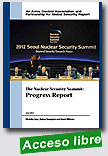 |
The Nuclear Security Summit: Progress Report
The Nuclear Security Summit, July 2013, 68 p.
This Arms Control Association and Partnership for Global Security report seeks to provide a comprehensive overview of the progress made on nuclear security by 53 countries participating in the Nuclear Security Summit (NSS) process since the first summit in 2010. It draws specific attention to actions taken since the 2012 summit in Seoul.
The 2010 and 2012 summits brought high-level attention to the threat posed by radioactive materials and spurred countries to
|
take action to prevent nuclear terrorism and further enhance global nuclear security. With less than a year before the third summit in the Netherlands, it is important to assess the progress that participating states have made in strengthening nuclear security over the past three years of the summit process. This will aid policymakers in determining what work remains to be done at the 2014 NSS and beyond.
The findings of this report show that while states have taken significant steps to lock down vulnerable nuclear material, strengthen international norms, and enhance security culture, more work remains to be done. The current regime remains a nationally-focused patchwork of laws, voluntary initiatives, and recommendations. At the 2014 summit in The Hague, NSS participants should push for a more cohesive, transparent, and effective nuclear security regime that includes more standardized reporting mechanisms and review measures to earn the confidence of the global community.
Extraído de:
http://www.armscontrol.org/files/Nuclear_Security_Summit_Report_2013.pdf
|
 |
|
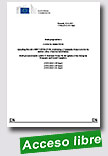
|
Draft proposal for a Council Directive Amending Directive 2009/71/EURATOM establishing a Community framework for the nuclear safety of nuclear installations
European Commission, 13 June 2013, 31 p.
The Commission has proposed to amend the 2009 nuclear safety directive. The proposal:
introduces new EU-wide safety objectives; sets up a European system of peer reviews of nuclear installations; establishes a mechanism for developing EU-wide harmonised nuclear safety guidelines; strengthens the role and independence of national regulators;
|
increases transparency on nuclear safety matters; includes new provisions for on-site emergency preparedness and response.
The EU needs its own verification mechanism to ensure that common safety objectives are achieved. At least every 6 years nuclear installations would have to undergo specific assessments on one or more nuclear safety issues. The assessments would be submitted for EU‑wide peer reviews
Extraído de: http://ec.europa.eu/energy/nuclear/safety/safety_en.htm |
| |
|
|
| |
| |
|
|
|
| |
|
|
|
| |
|
|
|
| |
|
